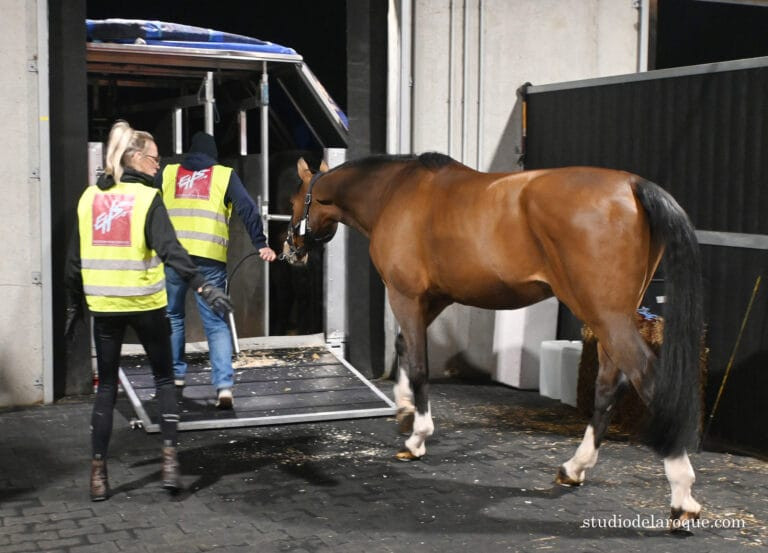The global movement of live horses is becoming increasingly complex, shaped by regulatory divergence, climate instability, and technological transformation. For equine logistics providers, success now demands precision planning, real-time monitoring, and a deep understanding of welfare regulations and regional trade dynamics. Anna Gance-Kubik, CEO and co-founder of European Horse Services France (EHS France), shares how the sector is adapting to these pressures while preparing for the next phase of global growth.
Equine air transport sits at the intersection of aviation, veterinary science, and international law. “One of the most significant regulatory challenges in equine air transport is harmonising international welfare standards across jurisdictions,” says Gance-Kubik. While IATA’s Live Animals Regulations (LAR) provide a common framework, countries often impose unique or contradictory requirements.
“Individual countries—especially within the EU—may impose additional or conflicting rules regarding documentation, veterinary checks, and quarantine requirements. This lack of uniformity can create delays and complicate compliance, particularly during multi-leg or intercontinental journeys.”
Increased scrutiny from authorities and the public has raised expectations around welfare standards. “Authorities now require more rigorous pre-travel assessments, including stress minimisation strategies, health certifications, and fitness-to-fly evaluations.”
A critical operational challenge is ensuring that every link in the chain—from loading to customs—is handled by trained personnel. “Another pressing challenge is ensuring qualified and trained staff are available throughout the shipping process—from grooms and loadmasters to customs agents familiar with animal welfare protocols.”
Adapting to environmental challenges
Climate volatility is reshaping equine transport logistics. “Climate change has introduced a new layer of complexity to equine transport planning,” Gance-Kubik notes. “Extreme heat events, unpredictable storms, and shifting seasonal patterns now require more dynamic scheduling and contingency planning.”
With horses particularly vulnerable to heat stress and dehydration, carriers are adjusting routes and timing to mitigate risk.
“Some carriers are adjusting flight times to avoid peak heat hours or are rerouting shipments through cooler hubs. Transporters are enhancing coordination with airports to reduce waiting times.”
Live weather updates and real-time meteorological risk assessments have become central to route planning. “Meteorological risk assessments have also become integral to transport planning, often with live updates triggering route changes on short notice.”
Innovation and in-flight monitoring
Technological upgrades in aircraft are improving welfare outcomes during long-haul shipments. “Recent innovations in aircraft technology have significantly enhanced the welfare of horses in transit,” says Gance-Kubik. Wide-body freighters such as the Boeing 777F and Airbus A330-200F now feature “advanced environmental control systems that maintain optimal temperature, humidity, and air circulation within cargo holds.”
The addition of HEPA filters has further improved air quality, an important safeguard for horses prone to respiratory issues. “One notable advancement is the integration of in-flight monitoring systems that track not just environmental conditions but also the movement and vitals of the horses via stall-mounted sensors.”
Gance-Kubik highlights Etihad Cargo’s “LiveAnimals” service, which offers “real-time surveillance capabilities that alert crew to any signs of distress or abnormal activity, allowing for immediate in-flight intervention.”
Modular horse stalls with shock-absorbing flooring and padded sidewalls have also reduced in-flight injuries, improving safety and helping insurers manage risk. “These improvements not only enhance animal welfare but also contribute to insurance risk reduction for high-value shipments.”
Digital transformation of equine logistics
“Digitalisation is reshaping the operational landscape of equine air transport by improving transparency, efficiency, and responsiveness,” Gance-Kubik says. Real-time GPS tracking has become standard, enabling all stakeholders to follow shipments closely.
“Owners, vets, and logistics teams can monitor shipments across their entire journey, allowing for proactive management of delays or rerouting due to weather or airport congestion.”
E-documentation tools are also streamlining cross-border compliance. “E-documentation platforms are streamlining the complex web of paperwork… reducing the risk of clerical errors and improving clearance times at customs.”
Pilots of blockchain systems are underway to create tamper-proof veterinary records. Mobile health logs synced with wearable monitors are enhancing care. “These allow handlers and veterinarians to input and access health data on each animal via secure apps… Some of these logs are synced with wearable health monitors that provide real-time biometric data such as heart rate and temperature, critical for early detection of stress or illness.”
Live animal flights raise difficult questions for the cargo sector’s decarbonisation agenda. “Sustainability in equine air transport is a delicate balancing act,” she acknowledges. “On one hand, there’s growing pressure from regulators and customers to reduce the sector’s carbon footprint. On the other, transporting live animals—especially elite horses—demands specific conditions that often preclude simpler carbon-saving measures like shipment consolidation or alternative routing.”
To address this, providers are adopting a multi-pronged approach. “Leading providers are investing in more fuel-efficient aircraft, implementing carbon offset programmes, and partnering with carriers that are part of sustainable aviation fuel (SAF) trials.”
Others are modelling emissions per horse per journey to provide clients with transparent sustainability data.
“Ultimately, while live animal flights can’t yet be fully ‘green,’ the focus is shifting from avoidance to mitigation—reducing emissions where possible and compensating where not.”
Post-Brexit disruption and operation
al lessons
Cross-border transport within Europe has become more complex since Brexit. “Post-Brexit changes to animal movement between the EU and UK have introduced significant operational complexities,” Gance-Kubik explains.
To keep horses moving, EHS expanded its operational team and introduced new certification systems. “We expanded our operations staff to handle increased paperwork and health certification demands. We also established a Type 2 vehicle EU-certification program in our Belgian offices for the UK trucks that wish to move the horses across EU.”
Building relationships with customs and veterinary authorities has been equally important. “We’ve built stronger relationships with DEFRA and EU counterparts to stay ahead of policy shifts and expedite problem-solving.”
Two key lessons have emerged: the importance of route pre-clearance and the value of diversified transit networks. “Horses moving for competition or breeding now often require days of lead-time, even for short-haul flights. With UK-EU routes becoming more unpredictable, EHS has explored alternative gateways and increased contingency plans with network of partner transit stables, customs agents and shipping partners.”
AI as a planning tool
Artificial intelligence is beginning to shape how logistics decisions are made—but won’t be replacing human handlers any time soon. “AI is proving increasingly useful in the planning, monitoring, and logistics phases of equine transport,” says Gance-Kubik.
Applications include predictive analytics to assess risk, dynamic routing tools, and AI-enhanced video monitoring that detects signs of stress or injury faster than human observation.
Still, the hands-on aspect of equine care requires human empathy and judgement. “Horses respond to the presence, voice, and calm demeanour of experienced grooms—especially during loading, unloading, and turbulent flight moments.”
She adds: “Empathy, intuition, and real-time decision-making are critical… skills AI cannot replicate. In short, AI is a tool that augments, not replaces, human expertise.”
Several factors are fuelling the next wave of demand for equine air transport. “Middle East and Asia-Pacific expansion, the globalisation of equestrian sports, and luxury equine tourism are all driving growth,” she says. “There’s increasing demand for transcontinental horse transport—especially for thoroughbreds, competition – and endurance horses.”
To meet this demand, EHS is investing across its network. “We’re investing in multilingual, regionally based staff to handle compliance across diverse regulatory regimes,” Gance-Kubik explains. “We’re also expanding partnerships with top-tier carriers and dedicated cargo terminals to improve service reliability.”





